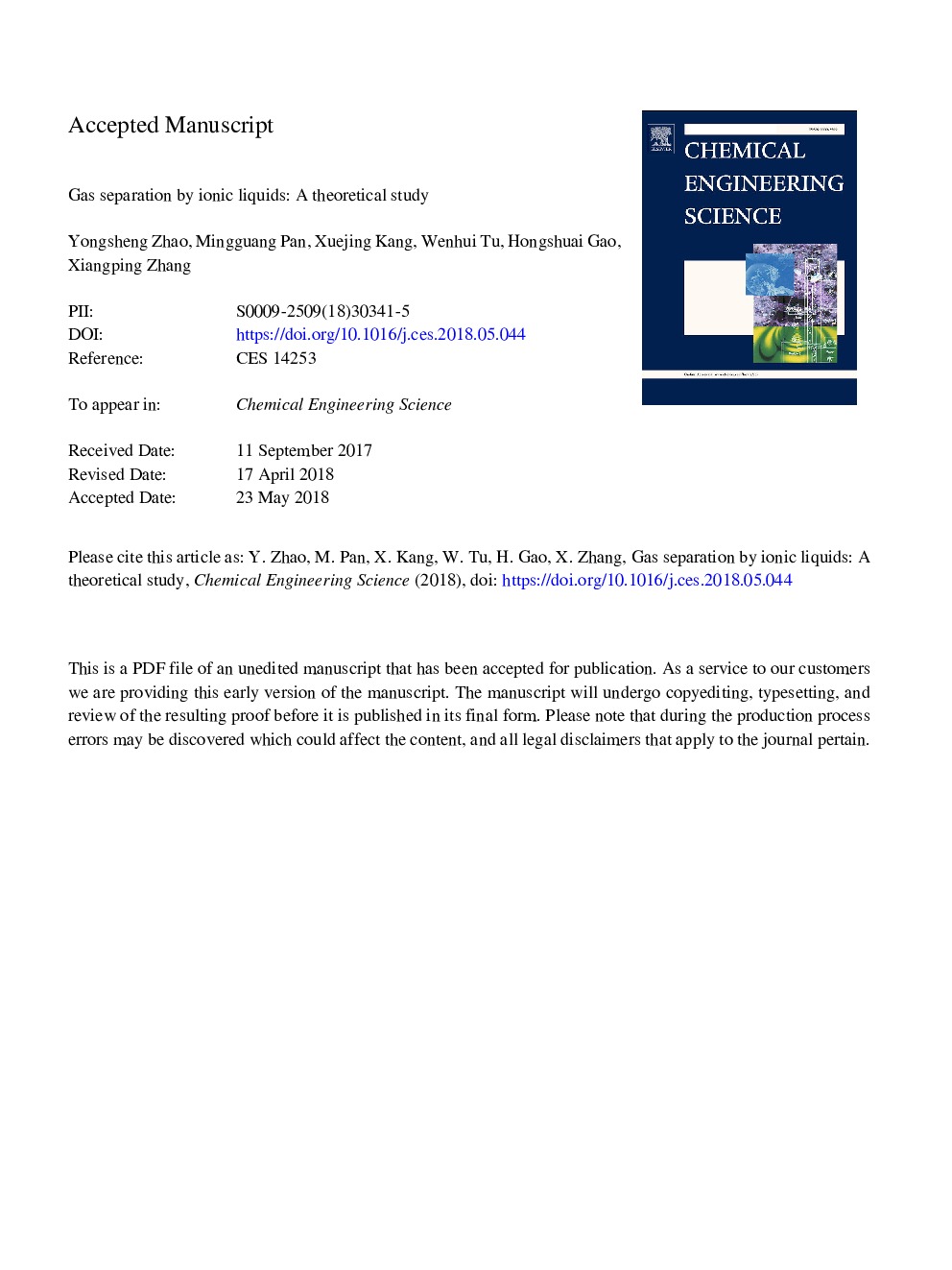| Article ID | Journal | Published Year | Pages | File Type |
|---|---|---|---|---|
| 6588352 | Chemical Engineering Science | 2018 | 46 Pages |
Abstract
Ionic liquids (ILs) have great potential for separating gases as well as avoiding solvent loss and environmental pollution. An in-depth understanding of the interaction mechanism between ILs and gases is extremely important for exploring and developing high-performing ILs for gas separation. Quantum chemistry is a powerful approach for gaining insight into separation mechanisms. Herein, with the aid of this method, the interaction mechanisms of three representative ILs, i.e., diethylmethylsulfonium tricyanomethane ([S221][CCN3]), triethylsulfonium acetate ([S222][Ace]), and 1-2(-hydroxyethyl)-3-methylimidazolium bis[(trifluoromethyl)sulfonyl]imide ([OHemim][NTf2]), with CO2/CH4, C2H2/C2H4, and NH3/CH4 mixtures are studied. The results show that hydrogen bonds (H-bonds), which are mainly electrostatic dominant (and sometimes even covalent dominant when the H-bond is sufficiently strong), play a crucial role in gas separation. Furthermore, there is a linear relationship between the distance of the H-bonds and both electron density (ÏBCP) and Laplacian values (â2ÏBCP). Symmetry adapted perturbation theory revealed that electrostatic energies are the main contributors to the total attractive energies between ILs and gases ([OHemim][NTf2]-NH3, [S221][CCN3]-CO2, and [S222][Ace]-C2H2). Therefore, based on the above results, we can design the ILs with specific functional groups, which are easy to form H-bonds with the gases to be separated.
Related Topics
Physical Sciences and Engineering
Chemical Engineering
Chemical Engineering (General)
Authors
Yongsheng Zhao, Mingguang Pan, Xuejing Kang, Wenhui Tu, Hongshuai Gao, Xiangping Zhang,
